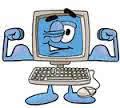
For senior living providers with multiple residents of varying levels of health and requirements, it’s often difficult to keep track of every preference – from favorite activities and hobbies to names of family members. Technology can help to better document and manage resident details so care teams can offer personalized service. This not only helps drive resident satisfaction, but also keeps staff in control and confident in their work.
Here are five ways senior living providers and their staff can help create a healthy and happy experience for residents:
- Their Medications
It’s important for staff to know all of the medications that each resident is required to take, and when. But, this can be challenging when the average senior living resident is taking nine different medications. Reducing the possibility of medication errors can help ensure that residents receive the best possible care at all times. We are seeing technology emerge in the form of electronic communications with pharmacies, automated time windows, and alerts. The key is to use technology, when possible, to help minimize risk. Luckily, there are tools, such as cloud-based electronic health record (EHR), which can help manage medications every day.
- Their Lifestyle Preferences
All residents have unique habits. Whether they are early risers, afternoon exercisers, frequent coffee drinkers, or avid readers. Knowing their lifestyle preferences and hobbies will help care teams better understand and connect with each resident while delivering a more personalized experience. Once you’re familiar with different residents’ routines and hobbies, you’ll be able to spot when residents are straying from what’s normal for them — which could signal a change in their physical or psychosocial wellbeing that requires attention. The Internet of Things/Machine-to-Machine (IoT and M2M) revolution is emerging in senior care. For example, sensors ported to data and communications systems that alert caregivers will allow them to respond more quickly to residents’ needs.
- Their Dietary Preferences and Requirements
Food plays a major role in resident satisfaction. Given the importance of proper nutrition, their willingness to eat their meals is essential. It’s important to balance resident preferences with nutritional needs. Residents’ personal dietary information can also be stored within your community’s cloud-based EHR, so you’ll never get Lawrence’s affinity for broccoli mixed up with Carol’s lactose intolerance.
- Their Mobility Challenges
With more than half of senior living residents moving in at 85 or more years old, their levels of independence may vary more significantly than they have in the past. While some may be taking long walks after lunch, the average resident requiring assistance with their daily activities has grown to 75 percent. Knowing which residents need help will allow senior living providers to allocate the appropriate staff members to aid with certain activities, such as dressing or taking the stairs to the dining room.
- Their Close Family Members and Primary Contacts
It’s important to learn which of your residents’ family members stay in close contact with them. These family members are not only more involved in the health and wellbeing of their senior relative, but they are the point of contact in an emergency. They can also help identify if a resident is behaving differently and may require additional attention from care teams. We are seeing an exciting assortment of creative resident engagement tools as well as family portals help not only the resident, but also staff.
It takes time to learn resident requirements and choices; it’s hard to ensure that all of your staff members can learn and remember this information. That’s where technology comes in. By securely storing information within each resident’s record as it’s learned, care teams can have personalized details in the palm of their hands, whether it’s a note from a family member or preferences discovered prior to move in, medications, or lifelong interests. All of this information can be in the hands of care givers to ensure the personal touch is real and experienced through all shifts. This is a big benefit and reward for a staff that works in shifts to maintain consistent care, and it helps ensure residents are satisfied and want to remain in the community.
_______________________________________________________________________________________________________
Author: Travis Palmquist, Vice President and General Manager, Senior Living, PointClickCare
Travis Palmquist is the vice president and general manager for PointClickCare’s Senior Living division. In his role, Travis is responsible for directing the Senior Living business group and ensuring all cross-functional teams are in lock-step, meeting the unique needs of the senior living market.
With more than 25 years’ experience working in the long-term post-acute care industry, Travis brings a wealth of knowledge and expertise to his role. Prior to joining PointClickCare, he worked for a national provider of senior care and senior living services as an executive director, director of operations and regional director of business development. Travis then took his operational knowledge and experience to the technology side of the business serving in executive leadership positions with both established technology companies as well as tech start-ups.